History/driving impression originally published in AutoWeek February 13, 1986
Condensation gathered on the windshield, but the soggy mist was not enough to justify wipers. Even so, the droplets, propelled by the wind of the Alfa’s forward progress, crept up and over the topmost edge of the unframed windshield glass. In the lower elevations nearby they spoke of rain, but up here, in what they call mountains in Connecticut, there was only the mist in the clouds through which the Alfa moved like some half-forgotten memory.
The car is rounded and red as it should be, a streamlined jellybean of a road missile. The headlights are faired in under steeply raked plexiglass that likely doesn’t do much for the optics. The tiny taillights are sunk in plexiglass-covered tunnels that render them all but invisible save from directly behind. The nose slopes sharply downward to embrace the stamped steel-metal grill that forms the Alfa shield.
What it is isn’t questioned: It’s an Alfa, a real car from stem to stern. No papier-mache show wonder this, that wilts under life on the road, that shatters at the first pothole like crystal at a party for five-year-olds. Take it out. Get it wet. It’s real.
And it’s one of a kind. But what that is is clouded as those Connecticut hills. It’s owned by one Jovin Lombardo of New York City and was most recently and expertly restored by Keith Goring of Alfas Unlimited of Norfolk, Connecticut. It appeared in Road & Track in November, 1955 – one photo, which could be of nothing but this car, and a sentence: “Bertone’s version of the Alfa Romeo Giulietta (1300cc) will sell for about $3500.” That much is known. It’s from there things get hazy. For starters, a letter from Bertone’s G.B. Panicco states, “The model shown (in a photo I’d sent) is probably a Bertone a car, but with so many modifications from the original that it is hard to say where it came from.” But it is a Bertone a car, and it is clearly original, as the photo in Road & Track shows.
Alfa also was a dry well. It hadn’t a clue. Even Fusi’s Book, the Bible of Alfisti worldwide and product of Luigi Fuzi, director of Alfa’s museum, carries no reference to it. Box and Crump, in their comprehensive history of Bertone, do not mention it. A search of literature of the day reveals only photos similar to that in Road & Track and tangential remarks about the car while concentrating on the production-destined (1956) Pinin Farina Spider.
At this point it is probably appropriate to discuss the period surrounding the appearance of the mystery Alfa. In 1954, Alfa Romeo had just introduced the Giulietta Sprint. This 1300cc coupe signaled a mammoth change in Alfa’s of manufacturing philosophy. Gone were the pre-war days of limited production, of catering to the very wealthy, the financial elite and the sportsman racer. Alfa was drawing a bead on the middle class, a move which would increase production figures by multiples. Bertone, building bodies for the Sprint, would be drawn along in Alfas wake, boosted almost overnight from glorified body shop to a near-major manufacturer.
Of the Bertone Spider it is generally assumed – though there is no confirmation – that Alfa asked for proposals for a spider version of the Giulietta. Supporting this supposition is the wheelbase of the Bertone car. It’s five inches shorter than the Sprint’s, exactly equal to the Pinin Farina car’s wheelbase. The Bertone Spider, however, was built before the car went into production. It might be just a coincidence…and maybe Dolly Parton’s a boy.
The car apparently was then sold off a specials commonly were in those days. There were reports of the car having been seen at Sebring – in the spectator parking lot – in ‘58 or ‘59. It also graced Bobcor’s Alfa showroom in Belmar, New Jersey, for a while. Later it was reported somewhere in the Groton, Connecticut, area being used as daily transportation. It came to its present owner in the early ‘70s when Lombardo answered an ad in the New York Times.
Since then it has been through two restorations. Sometime earlier it had gained the entire drivetrain of a later Alfa, the Sprint Veloce. The swap was complete, right down to the rear axle and parking brake mechanism indicative of that model. The original engine, most likely them mild 1300cc, 53-bhp version with a single downdraft carburetor, was replaced by the hotter Sprint Veloce engine with a pair of twin-throat carbs and a 90-bhp rating.
An unusual feature is its sculpted radiator top and the hood hinge. That’s not a typo; there’s only a single hood hinge, and it’s at the front of the engine compartment, under the nose bulge. The rake of the front end is so severe that to fit the radiator, the top of the radiator had to be contoured to match the underside of the hood.
There are several suppositions which can be made as to why Pinin Farina was chosen rather than Bertone to produce the Giulietta Spider. One, of course, is that Farina’s car was simply better looking. The Bertone Spider’s appeal is less than universal, even among Alfisti. Another is that Bertone was perhaps unable to take on the extra work, the shop’s capacity already taxed by the Sprint. Construction of a prototype may have been more a gesture of courtesy than a serious bid.
However the car came to be, it remains a slightly blurred page in Alfa history, obscured – and enjoyable – as a run through the mountain mists of Connecticut.
Do you prefer this Bertone style to the Pininfarina design that went into production?







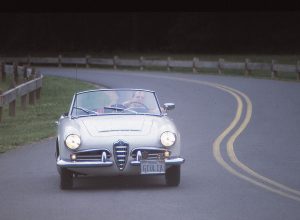
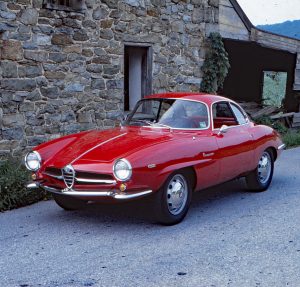

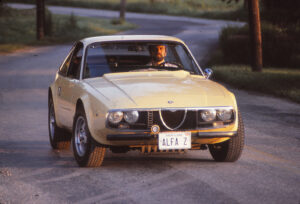
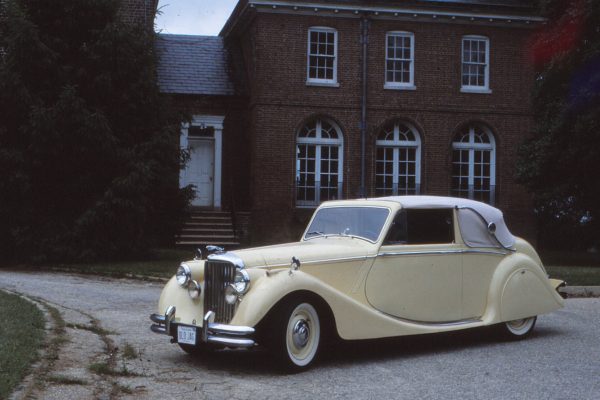
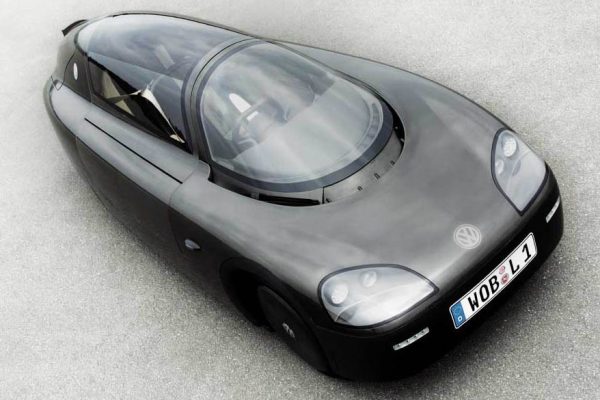
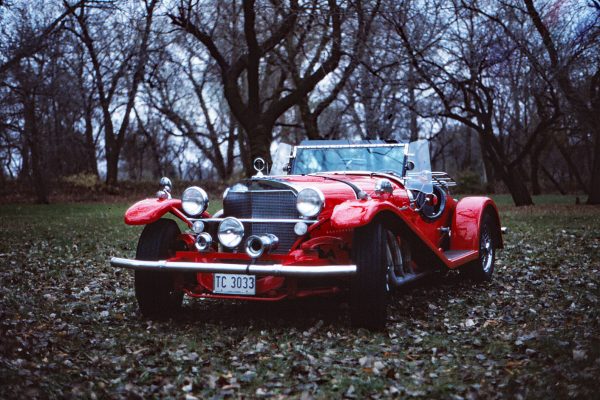
The Pininfarina (production) version has a more mature design, but there’s something about the Bertone design. The nose is much sportier, and the bumpers and grille are much more unified. However, I’m not sure how good it would have worked without the headlight covers here in the U.S. Also the fender line “haunches” behind the doors seem a bit overstated, which makes the car look a bit toy-like. Nevertheless, the design works overall, and I’m glad the car still exists.